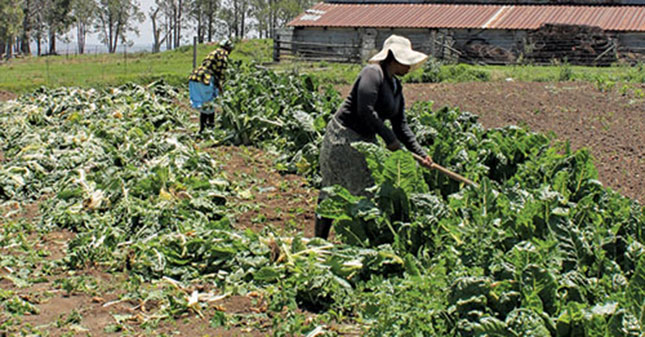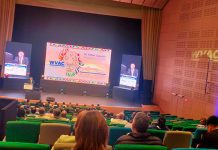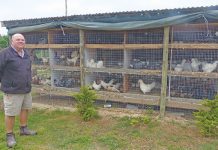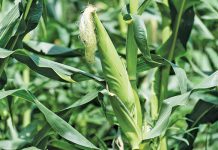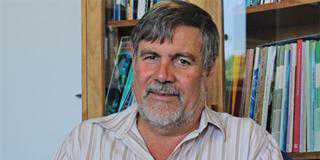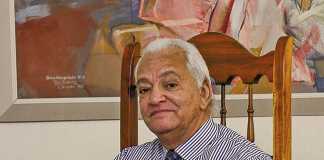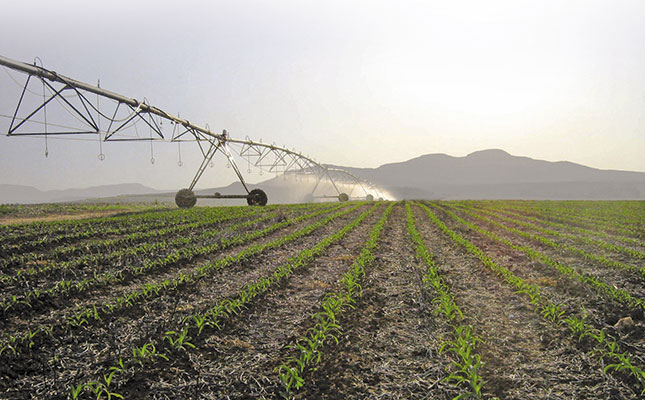
Photo: FW Archive
How widespread is no-till farming in Africa and South Africa? What areas are currently under no-till production in our country?
JOHANN: In the whole of Africa, only 1% of arable land is under no-till. The South African picture is better. The best adoption rate has been in the Western Cape, with nearly 80% of farmers having a no-till machine. Conservation agriculture (CA) has three cornerstones:
- Minimal disturbance of the soil (no-till);
- Maximum diversity in crops grown, including cover crops;
- Maximum cover on the soil, either with living plants or with plant residues.
- Most farmers are hovering on the edge of implementing all three principles, but many – between 65% and 75% – still struggle with the amount of residues. There’s a strong group of no-till farmers around Bergville and Winterton in KZN, but very few in the other provinces. Things are slowly changing, though, as producers realise the benefits of the system, especially in drier years.
READ: R11,3 million mushroom project launched in Ghana
How long has no-till been practised in your respective regions?
Johann: The first farmer to start with no-till in the Western Cape was Jack Human, who farmed in the Heidelberg district. After a flood in 1983 where a lot of soil was lost, he realised he needed to change the way he was farming. That was 30 years ago.
RICHARD: About 28 years in KZN.
Who are the pioneers of no-till methods in South Africa?
Johann: Aside from Jack Human, there’s Anthony Muirhead in KZN.
Richard: Cedara agronomist Dr John Mallett, Egon Zunckel of Bergville, Rene Stubbs of Karkloof and Tony da Costa in Nigel, to name just a few.
How is no-till suited to South Africa’s cropping conditions?
Johann: South Africa is a water-scarce country and there’s limited soil for agricultural production. The use of no-till helps with carbon sequestration and lowers the loss of carbon and moisture from the soil. It prevents large-scale erosion through wind and water. Together with the other two cornerstones mentioned, it helps improve soil health, leading to improved yield and sustainable production over time.
Richard: No-till works all over, but care must be taken in assessing the health of your soil through soil analysis, especially with reference to acid saturation and compaction. Advice should be sought before pursuing no-till.
What trends are we seeing in the adoption of no-till methods in South Africa, and how do these compare with the practice when it was first introduced?
Johann: In the Western Cape, we’re taking a serious look at the equipment we’re using. Currently, tine implants dominate in the region and we’re looking to convert to disc-seeders to lower soil disturbance even further. The use of cover crops within crop rotations is also a hot topic at the moment. Over the past five to 10 years, no-till has grown in stature across the province at a steady rate, and we’re trying to further the adoption of all the principles of CA farming.
RICHARD: Many farmers have tried no-till without investigating the important factors required to make a success of it. We found that many farmers became despondent after two years. Soil needs to gain better organic matter and the mulch needs to build up. Farmers must be patient. As for new developments, planters have improved, making more accurate planting easier.
Briefly, what are the most important principles of no-till?
Johann: Minimal soil disturbance. The use of a plough on soil is similar to having a hurricane, tornado, earthquake and veld fire hitting your house at the same time. Ploughing soil destroys the structure (which helps retain moisture and carbon) and the habitat of micro-organisms in the soil. Maximum diversity in crops and rotation of crops. Biodiversity on top of the soil equals biodiversity below the soil. Maximum cover on top of the soil. Plants, either living or dead, serve as armour for the soil, just
as our epidermis forms an armour against the sun and rain. It keeps the soil cooler in summer and warmer in winter, provides food for the soil organisms that help sequestrate carbon, and builds soil structure. For every 1% of added carbon to the soil, the water-holding capacity of that soil doubles.
Richard: The most important aspect of no-till is getting your soil right and inviting, so as to attract the all-important microbes which disappeared over many years of conventional methods – where we left the soil bare on top. Mulch not only reduces soil erosion, it reduces soil temperature by at least 4°C, creating better conditions for these organisms to thrive. They’re of utmost importance to the final effect that no-till will have on sustainable farming. You’ll need very good weed control, though.
What positive results have we seen in South Africa?
Johann: From long-term no-till crop rotation trials conducted by the Directorate: Plant Sciences of the Western Cape Department of Agriculture, we’ve seen not only lower inputs, but also higher and more stable production in, for instance, wheat.
The sustainability of the system over time has also proven itself. One trial has been running for 19 years, and the others for 14 years. Currently, we have a student finishing his master’s degree on the economy of adopting CA, and the results show that conventional agriculture will not sustain any farmer. Another master’s student has shown the benefit of carbon sequestration. Some systems have managed to sequestrate about 70t of carbon dioxide over a 13-year period. CA thus emits less carbon dioxide and captures more carbon in the soil, which helps with the effects of global warming.
Richard: The benefits include reduced soil erosion, more stable yield and reduced fuel cost and tractor hours.
What pitfalls have we seen in South Africa?
Johann: The cost of the machinery is high and that puts some producers off changing from conventional agriculture to CA. A farmer has to make a radical change in mindset as the system takes time to come into effect. Success will not come overnight. Right now we have problems with insects in some crops at the start of the season. Increasing biodiversity may help, by reintroducing natural predators.
Richard: A lack of attention to details, like soil analysis, impatience, not creating the correct mulch, and slack weed control.
Can no-till be considered a mainstream agronomic practice in SA? Have agricultural machinery and input suppliers catered for the needs of no-till farmers?
Johann: Not in the whole of SA, but certainly in the Western Cape. We’ve been lucky to have people designing and building no-till machines locally, lowering costs, making them competitive with imported machinery. Local plant protection and nutrition suppliers have bought into the system and try help farmers manage problems.
Richard: The practice of no-till has grown immensely in SA and involves emerging farmers as well. Smaller planters and sprayers have been developed for them.
According to your organisation, is government acknowledging the value of no-till and providing the appropriate support for research and promotion of no-till methods in South Africa?
Johann: Speaking as the secretary of Conservation Agriculture Western Cape (CAWC), and not as a government employee, the Western Cape government has been a strong supporter of CA and all our research efforts are focused on matters concerning the improvement of it. I can’t comment on national government’s point of view, but as far as I know there’s a working group looking into CA. Unfortunately, farmers are not rewarded for practising CA.
Richard: The No-Till Club has been involved in workshops convened by the national department of agriculture, as well as the UN’s Food and Agriculture Organisation (FAO). The KwaZulu-Natal department of agriculture has played a pivotal role in our projects and getting the message out to all farmers both big and small. We are tremendously grateful for their positive and willing assistance.
What would your organisations like to see from both the public and private sector for the purposes of enhancing no-till production methods in South Africa?
Johann: We can only hope for more funding to make sure that cutting-edge research is maintained for our producers. Also, support for our efforts in spreading the word on CA not only within our province, but throughout the whole of Africa.
Richard: Nothing would thrill me more than a public-private practical project, tackled by government research scientists, with inputs from agricultural supply companies. This should be on a practical farming scale and not just on a small-plot scale, where various practices are measured in terms of return on investment and ensuring environmental stability, agricultural sustainability and food security. I feel this should be a five-year project. All farmers could visit it and return home after witnessing for themselves the benefits of CA, ready to implement the practice.
How long have your respective organisations been in existence, how many members do you have and what do you do to promote CA?
Johann: The CAWC was formed three years ago. After a visit to Argentina and seeing how the country’s no-till association operates, I wrote in my trip report that we as a province could benefit from a similar organisation. A pilot meeting was held at Elsenburg and the association was formed. Our main aim was to get our producers, industry and researchers speaking
the same language and helping each other’s progress. We have a membership of 60. We’re open to all, but not all farmers feel it necessary to join as members.We conduct green tours (focusing on growing crops) and brown tours (focusing on stubble retention and soil profiles) throughout the season, and send out monthly newsletters. We’ve conducted two conservation symposia over the past two years. The WCDoA made it possible for the association to have its base at Elsenburg and supports us with non-monetary essentials such as email and the like. The monthly newsletter is produced from my office.
Richard: At the moment, we have about 130 members. The No-Till conference is held in September every year and attendance has increased from approximately 65 in 2006 to 343 in 2014. We print three newsletters per annum and circulation has grown, from 800 to between 3 000 and 4 000 per edition, depending on the season.The No-Till Club ran a five-year trial on soil-borne diseases on Anthony Muirhead’s farm in the Winterton district, which was sponsored by the Maize Trust. In addition, we’re also investigating holding a basic no-till course, should the demand call for it.
Is no-till limited to traditional commercial farming operations or is the system also being used by developing farmers?
Johann: No, the no-till system is by no means limited to commercial farmers. There are several developing farmers who have received no-till equipment and are being mentored by some of the best no-till farmers in our province.
Richard: Definitely not. No-till can be used in your own garden at home.
What is the future of no-till in South Africa?
Johann: CA, which includes no-till, will be the only way we’ll feed humanity in the future. In South Africa, it will grow exponentially over the next few years if all stakeholders play their part. The signs of interest and the questions being asked are very encouraging, but we need to have more practical projects for people to really observe and learn about the system. And we need patience to allow nature to restore what has been lost in our soils. This won’t happen over one season, but we need to have faith that if we follow the basic rules, we’ll attain the sustainability we’re looking for, along with food security.
Phone Dr Johann Strauss on 021 808 5479 or 082 907 3109, or email him at [email protected]. Phone Richard Findlay
on 033 330 2062 or 072 147 9703, or email him at [email protected]. Visit the website www.notillclub.com.
This article was originally published in the 17 October 2014 issue of Farmer’s Weekly.




